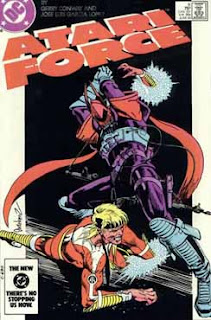 |
| Art by Keith Parkinson |
The barbarians swept out of the hills in a ravening horde, without warning, and stormed Venarium with such fury none could stand before them. Men, women, and children were butchered. Venarium was reduced to a mass of charred ruins, as it is to this day. The Aquilonians were driven back across the marches and have never since tried to colonize the Cimmerian country.
- Robert E, Howard, "Beyond the Black River"
The Bone March comes by its ill-omened name due to the number of bodies fallen and carelessly interred in its plains and forested hills. The Aerdi added it to their kingdom but paid dearly to wrest it from the Fruztii. The new margravate was awarded to the hero knight Caldni Vir, who led the charge that broke the siege of Spinecastle. For over 400 years, the Aerdi presence grew in the region, and the Overkingdom's greater concerns were elsewhere.
The so-called humanoid presence in the Raker Mountains had long been known. They had been pushed there by conflict with the Flan and Frustii. The Flan in particular made a regular practice of harrying them so that their numbers didn't grow too large. Many a Tenha youth found first glory in a raid on an orcish settlement.
After an increase in assaults against Aerdian villages and sorties against outposts, orcs and their allies launched a full-scale invasion in 561 CY. By 563, Aerdian Bone March had fallen, and the Markgraf Clement was slain.
An account by a priest of the Church of Law at Spinecastle who escaped alive is recorded in the annals of the Aerdi Chronicle: "The inhumans came forth into the March in terrible numbers, inflamed with fury. This followed long months where raiders attacked with most savage frenzy manors and villages of the hinterlands, and the horde exulted in fire, pillage, and slaughter. They were utterly cruel in inflicting torture, greedy in plundering, most insolent in abuse, even unto the sacred Houses of Holy Law."
Reports such as these fed the popular idea of the orc as a unique threat to the Overkingdom and the Realms of Law in general. In fact, humans were able to interact with orcs peaceful to a greater degree than other humanoid species due to their greater intelligence and relative lack of desire to use humans as a food source. Though their day-to-day existence was precarious, humans did remain within the March, and some less scrupulous and more daring individuals even prospered as intermediaries between human and humanoid societies.
It is true that orcs often tend to reserve a particular disdain for the clergy of Law who they seem to view as witches and agents of oppression. Native orcish religion is dualistic with two "houses" or "tribes" of deities, one of which is fiery, aggressive, or volatile and another that is serene, defensive or stable. Deities have been known to move from one group to the other and some deities are difficult to qualify. Human scholars have historically struggled with translating this distinction and have tended to default to their own dichotomies of "law and chaos" or "good and evil." Protracted conflict with humans over their time in the Flanaess has led orcs to turn to the fiery gods and promoted the importance of the Gruumsh cult.




.jpg)





















_01.jpg)































